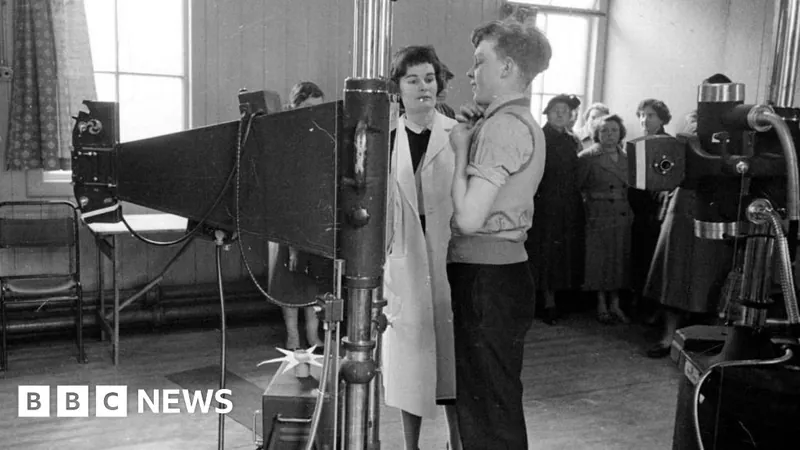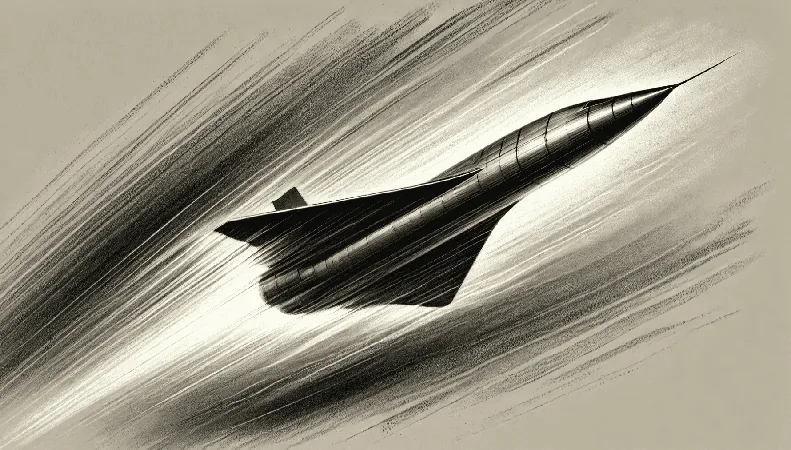
How an Ingenious Campaign with Chickens and Cigarettes Vanquished a TB Epidemic in Glasgow
2024-11-06
Author: Wei
Introduction
In a remarkable initiative that combined ingenuity and community spirit, Glasgow waged a war against tuberculosis (TB) in 1957, a battle that would ultimately save countless lives. At the time, the city was struggling with the highest tuberculosis death rate in Europe, and health officials recognized the urgent need for action to combat this public health crisis.
The 'X-ray Now' Mass Screening Campaign
Enter the revolutionary “X-ray now” mass screening campaign. Launched in the aftermath of World War II, the campaign aimed to screen over 700,000 residents in just five weeks, an ambitious target that required the efforts of 12,000 volunteers. Armed with mobile X-ray units and unyielding determination, these volunteers knocked on doors and rallied the community, encouraging neighbors to participate in the screening.
Incentives for Participation
To incentivize participation, the health authorities offered an array of enticing prizes, from household appliances to lavish holidays. Yet, it was the quirky inclusion of cigarettes, chickens, and chocolates that drew significant attention, adding a touch of whimsy to the serious endeavor. This unique approach not only encouraged participation but also fostered a sense of communal effort, as the entire population came together to confront the invading illness.
Results of the Campaign
The results of this powerful campaign were staggering. The screening led to the identification and treatment of 2,369 TB cases, and according to a recent study conducted by the University of Glasgow, the long-term benefits are profound. Researchers estimate that the initiative averted another 4,599 TB cases in the five years that followed, demonstrating the far-reaching impact of the program.
Public Health Insights
Professor Peter MacPherson, a leading figure in global public health at the University of Glasgow, emphasized how essential it is to draw lessons from the past as we continue the fight against TB globally. The disease remains a significant threat, claiming over 1.2 million lives every year, particularly in impoverished regions of Africa, Asia, and South America.
Community Mobilization and Publicity
The Glasgow operation harnessed an extensive publicity campaign, employing loudspeaker vans, illuminated tram cars, and even aerial banners to spread the word about the screenings. The use of catchy songs during football matches further galvanized community involvement, creating an atmosphere of solidarity and urgency.
Reflecting on the Past
Despite the unconventional rewards, Professor MacPherson pointed out that some of the prizes, like cigarettes, would be frowned upon today. Nonetheless, the success of the program was undeniably due to the extraordinary volunteer work and the community’s commitment to public health at a time when TB was a pervasive threat.
Conclusion
Now, as we grapple with the persistent issue of TB, Glasgow’s historical example offers valuable insight into community mobilization and the power of public health campaigns. The lessons learned could guide current and future interventions aimed at eradicating this age-old disease once and for all.
What Are the Symptoms of TB?
TB is a bacterial infection primarily spread through the air when an infected person coughs or sneezes. While the disease is treatable with antibiotics, it can be deadly if neglected. The World Health Organization reported that approximately 11 million people fell ill with TB last year alone, with the death toll surpassing one million.
Common Symptoms of TB
Common symptoms include:
- A persistent cough lasting longer than three weeks
- Unexplained weight loss
- Night sweats
- Persistent fever
As cases rise in Scotland and around the world, it becomes increasingly crucial to draw inspiration from successful initiatives like the one in Glasgow, showcasing how neighborly cooperation and creative incentives can lead the fight against formidable public health challenges.


 Brasil (PT)
Brasil (PT)
 Canada (EN)
Canada (EN)
 Chile (ES)
Chile (ES)
 España (ES)
España (ES)
 France (FR)
France (FR)
 Hong Kong (EN)
Hong Kong (EN)
 Italia (IT)
Italia (IT)
 日本 (JA)
日本 (JA)
 Magyarország (HU)
Magyarország (HU)
 Norge (NO)
Norge (NO)
 Polska (PL)
Polska (PL)
 Schweiz (DE)
Schweiz (DE)
 Singapore (EN)
Singapore (EN)
 Sverige (SV)
Sverige (SV)
 Suomi (FI)
Suomi (FI)
 Türkiye (TR)
Türkiye (TR)